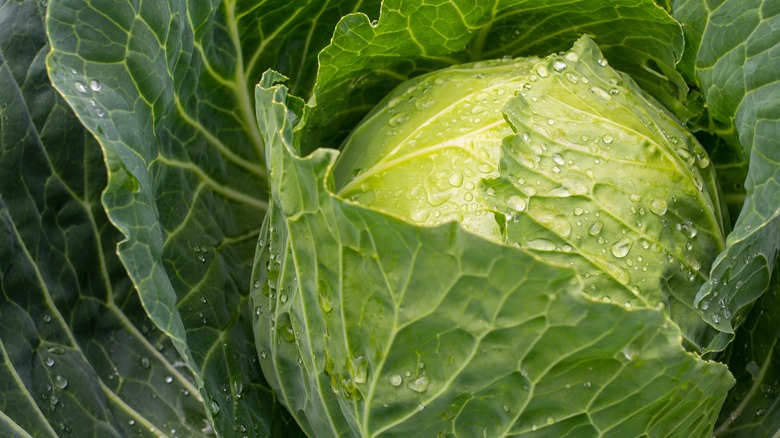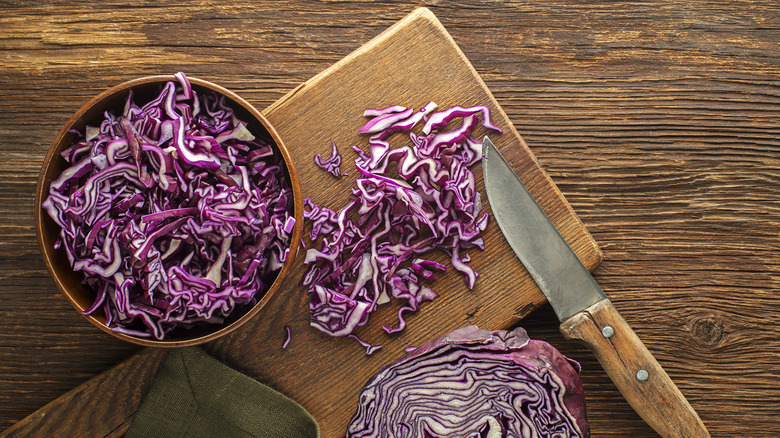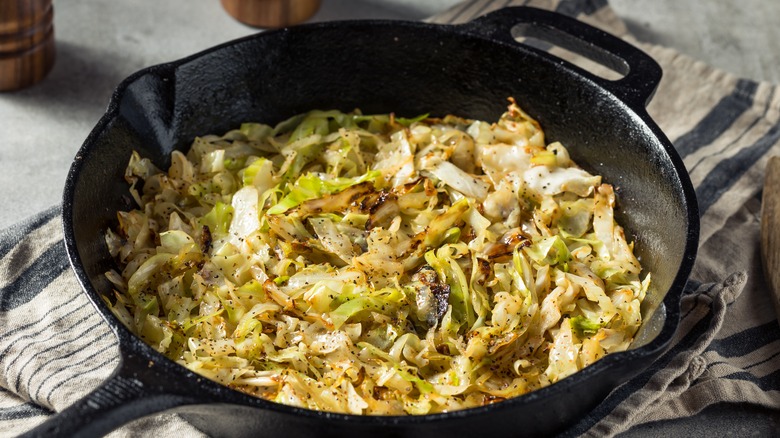How Does Red Cabbage Taste Compared To Green Cabbage?
Though cabbage isn't for everyone, it can't be denied that it's a helpful vegetable. Full of various vitamins and nutrients, cabbage is an especially good source of Vitamins C and Vitamin K, per Healthline. In addition to its extensive vitamin and nutrient content, it assists with several important functions, including reducing inflammation, improving digestion, and decreasing blood pressure. It's also a rather versatile vegetable, meaning you can reap its benefits from many different dishes, such as salads, slaws, and soups.
While the most common type is the green variety (via LeafyPlace), there is another pretty well-known kind: red cabbage. The latter, which is also known as purple cabbage, got its name from its leaves, which range from a dark red to a purple hue. There are a few ways green cabbage and red cabbage differ from each other. According to the University of Vermont, the leaves of red cabbage are slightly tougher than that of its green counterpart. Further, red cabbage also has a different taste than green cabbage.
Red cabbage tastes more peppery
According to Pediaa, red cabbage has a stronger, more peppery flavor than green cabbage. The latter still tastes peppery but has a milder flavor than its purple counterpart. This difference can influence when you should use purple or green cabbage. For example, WebMD reports you can eat red cabbage raw or cooked, but notes cooking it can mellow its strong flavor profile. Some of the best cooking methods for red cabbage include braising and roasting, per HuffPost.
Similar to red cabbage, the green variety can also be eaten cooked or uncooked. But since it already has a gentle flavor, it may be a better option for eating raw; it works very well in dishes like kale and cabbage coleslaw. However, it really all boils down to your palate. If you don't mind a stronger, more peppery flavor, then you'll love the taste of uncooked red cabbage. And, if you want something that already has a mild taste before cooking, green cabbage is a great option, too.
Tips for making cabbage taste great
Of course, there are countless cabbage recipes out there. However, if you're not a fan, what can you do to make these dishes taste better? For starters, whenever you boil cabbage, leave the pan uncovered for about two minutes, per Better Homes & Gardens. According to a 2018 research article in Frontiers, cabbage and other plants contain hydrogen sulfide, a gas that smells like rotten eggs and which plays a role in plant growth and development.
Letting cabbage cook uncovered for a couple of minutes will allow the hydrogen sulfide to evaporate, making the vegetable smell more pleasant. In addition to the rotten smell cabbage emits while cooking, some people say it tastes bland. To infuse it with flavor, try sautéing it (via Better Homes & Gardens). Sautéing allows you to season the cabbage with pretty much anything you want, ensuring it tastes the way you want it to.


